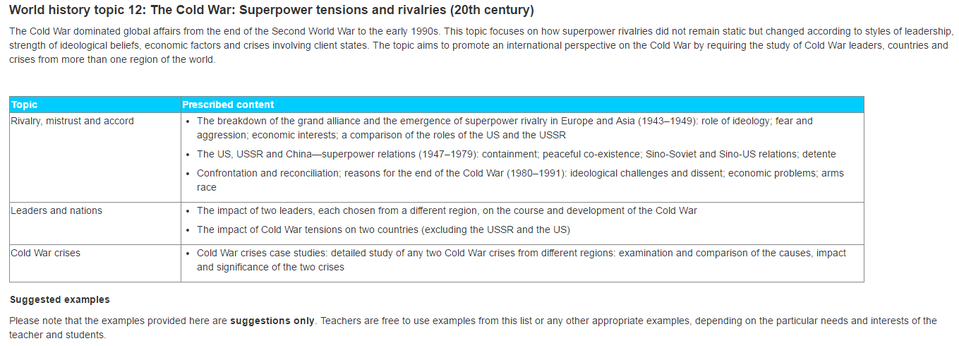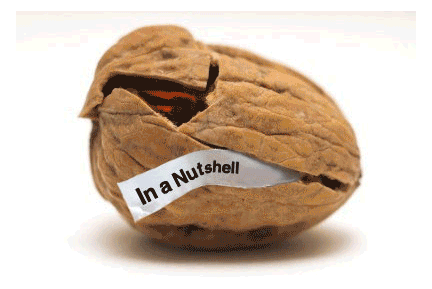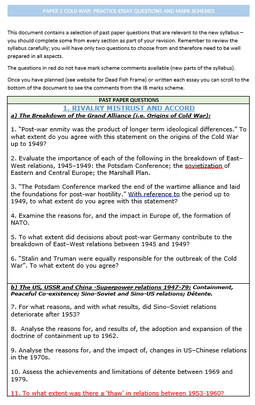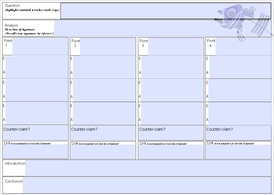A. SYLLABUS CONTENT
* Important note: You will now only have a choice of two questions on the examination - this means that you must revise all sections.
What should I revise for the 'Leaders & Nations' and 'Cold War Crises' sections?
You will have focused on certain case studies with your teacher - you should therefore focus on these. You could do the following:
1. Impact of two leaders from a different region: STALIN AND TRUMAN
2. Impact of Cold War tensions on two countries (excluding the USSR and US): China, Germany, Cuba, Yugoslavia etc
3. Cold War Crises Case Studies, two from a different region: BERLIN AIRLIFT, CUBAN MISSILE CRISIS
*It does not matter if your class has chosen different examples (or, indeed, if you want to of your own accord), but it is important that you follow the syllabus directions precisely.
1. Impact of two leaders from a different region: STALIN AND TRUMAN
2. Impact of Cold War tensions on two countries (excluding the USSR and US): China, Germany, Cuba, Yugoslavia etc
3. Cold War Crises Case Studies, two from a different region: BERLIN AIRLIFT, CUBAN MISSILE CRISIS
*It does not matter if your class has chosen different examples (or, indeed, if you want to of your own accord), but it is important that you follow the syllabus directions precisely.
B. REVISION MATERIALS
There are several resources for you to revise (in this order):
1. Your lesson notes should be your absolutely first choice. If your class have been using this website, you should have a notes frame from every lesson.
2. Your textbook: 'The Cold War: Superpower Tensions and Rivalries' Be careful: it goes into lots of detail in places as it covers all possible case studies etc - so use it with the focus points that you have studied in mind. It contains practice questions and writing advice too.
3. There are some overview notes below that may be helpful
1. Your lesson notes should be your absolutely first choice. If your class have been using this website, you should have a notes frame from every lesson.
2. Your textbook: 'The Cold War: Superpower Tensions and Rivalries' Be careful: it goes into lots of detail in places as it covers all possible case studies etc - so use it with the focus points that you have studied in mind. It contains practice questions and writing advice too.
3. There are some overview notes below that may be helpful
|
The guide below is aimed to be a summary of the key events /issues. You must combine your own notes with it as you identify the key elements that you need to know in each of the above syllabus content. It includes additional material that we have not covered in depth - regard this as useful contextual knowledge only. |
c. PAST PAPER QUESTIONS
All past papers are linked on the previous page.
1. Use the Dead Fish planning frame to help you plan each answer.
2. Compare your plan to the mark scheme section in the second half of the document - what can you learn from this?
3. Practice writing a few essays to a 45 minute time limit.
Questions and mark schemes (second part of document):
1. Use the Dead Fish planning frame to help you plan each answer.
2. Compare your plan to the mark scheme section in the second half of the document - what can you learn from this?
3. Practice writing a few essays to a 45 minute time limit.
Questions and mark schemes (second part of document):
Dead Fish Planning Frame:



